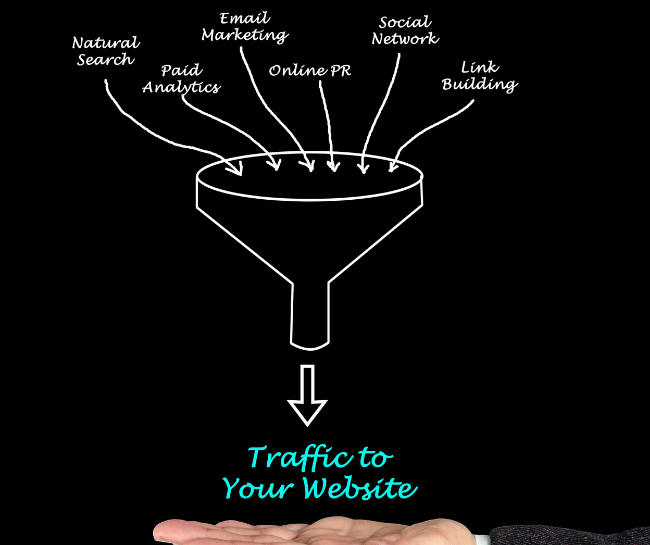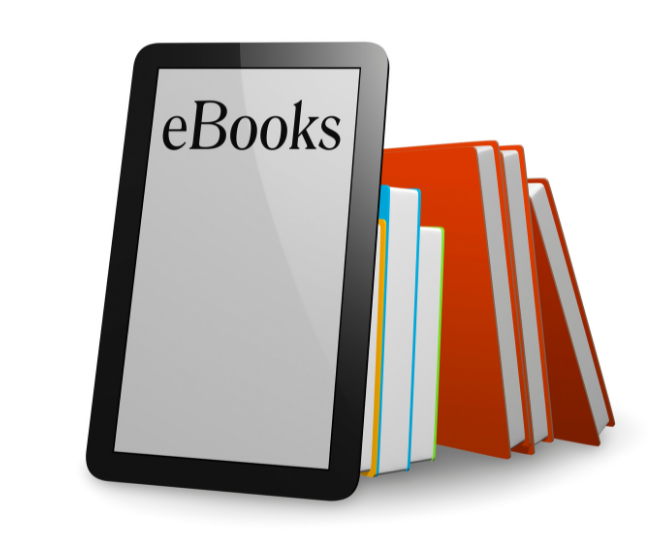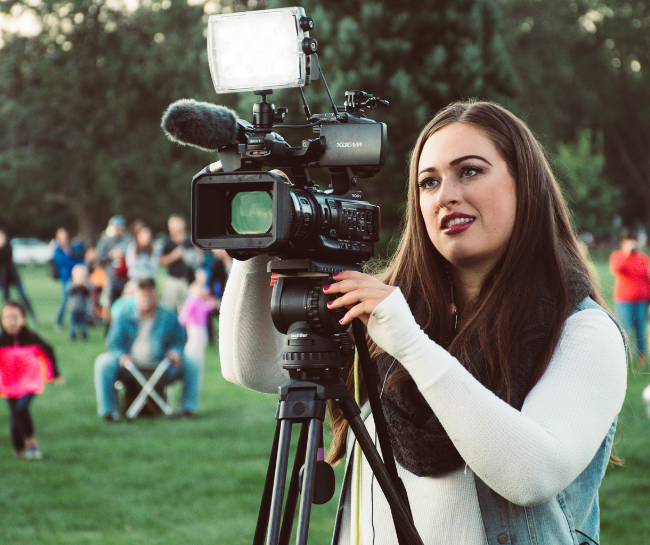23 Types of Content That Drive Website Traffic

If you’re looking for ways to drive website traffic, you’re in luck. In this blog post, we will discuss 23 types of content that are perfect for attracting visitors to your site. We’ll also provide tips on how to create each type of content. So, whether you’re a beginner or an experienced content marketer, you will find something useful here!
What are the different types of website traffic

There are four main types of website traffic: direct, organic, referral, and email.
Direct traffic occurs when someone types a website’s address into their browser or clicks on a bookmark. Organic traffic comes from search engines, while referral traffic comes from links on other websites. Email traffic occurs when someone clicks on a link in an email message.
Each type of traffic has its own advantages and disadvantages.
For example, direct traffic is usually the most reliable, but it’s hard to attract. Organic traffic is often more difficult to earn, but it can be precious if it comes from a high-quality source. Referral and email traffic can also be valuable, but they can be more unpredictable than direct and organic traffic.
In order to maximize website traffic, it’s important to understand the different types of traffic and how to attract them.
Website traffic refers to web users who visit a website. Web traffic is measured in visits, sometimes called “sessions,” and is a common way to measure an online business effectiveness at attracting an audience.
Why is creating content important to driving traffic

Creating quality content is essential to driving traffic to your website. By providing informative, well-written content, you can attract readers who are interested in what you have to say.
In addition, by sharing your content on social media and other websites, you can reach a wider audience and increase the chances that people will visit your site.
Creating compelling content is not always easy, but it is worth the effort if you want to bring more visitors to your website. With a little effort, you can create content that people will want to read and share, which will ultimately lead to more traffic for your site.
But what type of content can you create? How and when to use each one?
Let’s find out 23 content types that can help you with your goal.
- Blog posts

Blog posts are articles that are typically between 500 and 1000 words in length, though sometimes they can be shorter or longer. They usually comprise a mix of text, images, and videos.
Blog posts are a great way to communicate your thoughts and ideas with the world. They can help you build trust and credibility with your readers, and they can also help you attract new visitors to your website.
How to create them
To create a blog post, start by brainstorming a topic that you and your audience are interested in or that you know a lot about. Once you have a topic, write some of your thoughts on the topic.
When you have all of your content together, write a brief introduction to your post and then write your main body. Once you’re finished, add a conclusion. Next, gather some images or videos and include them in your post and publish your post.
When to use them
Blog posts are best used when you want to share your thoughts on a topic with your audience. You can also use them to attract new visitors to your website.
If you want to get the best results, create and publish blog posts at least once a week.
Things to keep in mind
- Blog posts can be a great way to drive website traffic, but only if they are well written and informative.
- They are a great way to connect with your audience, but you need to make sure that they are of high quality.
- Creating high quality blog posts takes time and effort, but it is worth it in the end.
- SEO plays a crucial role in getting your blog posts found by potential readers, so optimize them for search engines.
- eBooks

eBooks are electronic books that someone can read on a computer, phone, or tablet. They usually contain a mix of text, images, and videos.
Similar to blog posts, eBooks can be a splendid way to share your ideas with the world. Plus, you can use them as an incentive to attract new visitors to your website.
How to create them
To create an eBook, you’ll need to write a series of articles on a topic, compile them into a document. Once you have your content together, start by writing a brief introduction to your eBook.
Next, write an article and include it in your eBook. Repeat this process until you have included all of your articles. Once you’re finished, create a cover and table of contents and publish your eBook.
For this purpose, you can use a tool like Adobe InDesign to create a PDF version of your eBook.
When to use them
You can use eBooks as part of your content marketing strategy at any time you want to drive website traffic around special events like product launches or holiday seasons.
Things to keep in mind
- You should format an eBook for easy reading on different devices.
- Its cover and table of contents must be attractive and eye-catching.
- A fantastic eBook has a great title. So, don’t forget to select the best title in order to attract more people.
- Design is essential. eBooks that do not include colors, graphics, or excellent formatting are deemed uninteresting.
- Podcast episodes

Podcast episodes are audio files people can download from the internet and played on a computer or mobile device. They are usually available as a series, with each episode featuring a different topic or guest. Episodes can range in length from a few minutes to several hours, making them a flexible option for busy people.
Podcasts are a popular way to consume content, as they allow listeners to multitask and choose when and where they listen. Thus, they can be an excellent way to share information or entertainment with a wide audience.
How to create them
When creating a podcast episode, it is important to consider the overall tone and style of the series, as well as the target audience. Then, you need to create a plan for your podcast episodes.
Once you have a plan in place, start by writing an outline for the episode. This will help you stay on track and ensure that the episode covers all the necessary topics. Next, record your episode.
To create a podcast episode, you will need to record and edit audio files, which you can easily do with inexpensive software such as Audacity. Once your episode is complete, you can upload it to a hosting platform such as SoundCloud or iTunes.
When to use them
As a business owner, you are always looking for new ways to reach your target audience and promote your brand. You may have considered using podcast episodes as a marketing tool, but you’re not sure when the best time to start is.
The truth is, there is no one-size-fits-all answer to this question. It depends on factors such as your industry, your target audience, and your marketing goals.
However, there are a few general guidelines that can help you determine when the time is right for your business.
For example, if you want to build thought leadership or establish yourself as an expert in your field, starting a podcast can be an excellent way to do so.
Things to keep in mind
- They are relatively easy and inexpensive to produce, and a listener can download and play them at his convenience.
- However, they require a significant time commitment, as each episode must be planned, written, recorded, and edited.
- Podcast episodes are best used when you want to share in-depth information or stories with your audience.
- Email newsletter

Email newsletters are periodic emails that are sent to a list of subscribers. They typically contain a mix of original content, curated content, and promotions.
Email newsletters are a great way to keep subscribers informed about your latest products, services, and promotions. They also allow you to build relationships with subscribers by providing valuable content they can’t find anywhere else.
How to create it
To create your email newsletter, decide what content you want to include. Your newsletter should have a focus, whether it’s promoting new products or highlighting recent blog posts. Make sure each piece of content applies to your audience and provides value.
Also, you need to keep it short and sweet. No one wants to read a long, rambling email. Get to the point and be concise in your language.
Then, use eye-catching images. People are visual creatures, so make sure your newsletter has attractive visuals that complement the text.
When to use it
The best time to send an email newsletter is typically in the morning or evening, when people are more likely to be checking their email. However, better test different times to find out what works best for your audience.
Things to keep in mind
- If your content is not high quality and relevant to your audience, then they will unsubscribe.
- Your email newsletter design is important. If it’s not visually appealing, people will not read it.
- An email with no good headline will not be read.
- Your copy has to be well written and easy to read.
- Videos and photos

Videos and photos are visual content which you can use to promote your brand or products.
They are a great way to keep your audience engaged and make people aware of your brand. You can use them on websites, social media, and marketing materials.
How to create them
When creating videos and photos, keep your target audience in mind. What are they interested in? What are they looking for?
Then, create content that is relevant and interesting to them. Ensure you use high-quality visuals and make your videos and photos eye-catching.
Don’t forget to align your brand voice and colors with your videos and photos. This will help to create a cohesive look and feel across all of your marketing materials.
When to use them
The best time to use videos and photos is when you want to engage your audience and promote your brand. However, test different times to see what works best for your audience.
Things to keep in mind
- Videos and photos require a lot of time and effort to produce.
- Not all platforms support videos and photos. Make sure you are aware of the platforms that do before you create content.
- A single visual can be used in multiple ways. For example, a video can be used on websites, social media, and marketing materials.
- A great one can make people discover your brand and turn them into paying customers!
- Infographics

Infographics are graphical representations of data or information.
They are a great way to present data or information in a visually appealing way. They are also a great way to engage your audience and advertise your brand.
How to create them
When creating an info-graphic, start by finding information that applies to your audience. Then, present the information in a visually appealing way.
You can also use high-quality visuals and make your info-graphic easy to read. Besides the visuals, you can use icons and other visuals to help explain the data.
When finished, you can share your info-graphic on your website, social media channels, and other channels.
When to use them
Info-graphics are a great way to communicate complex information in a visually appealing way. You should use them when you want to highlight key data points, illustrate trends, or show cause-and-effect relationships.
Things to keep in mind
- Creating infographics can be a daunting task.
- One single infographic cannot educate, persuade, and entertain! Be sure to focus on one goal when creating one.
- Infographics that are not accurate and up-to-date can be harmful to your brand. Make sure you verify the data before you create your infographic.
- Keep them simple. Too much information can be overwhelming and difficult to digest.
- How-to guides

How-to guides are step-by-step instructions on how to do something.
How-to guides are a great opportunity to reach and engage your audience. They are also a great way to teach people how to do something.
How to create them
When creating a how-to guide, start by finding data or information that applies to your audience. Next, present the data in a step-by-step way.
Ensure you use quality visuals and make your how-to guide easy to follow. You can also use videos and photos to help explain the steps.
When finished, you can share your how-to guide on your website, social media channels, and other channels.
When to use them
How-to guides are a great way to reach your audience and teach them how to do something. You should use them when you want to show people how to do something.
Things to keep in mind
- How-to guides can be time-consuming to create, but they are worth the investment.
- Be sure to focus on one task at a time when creating a how-to guide. Trying to do too much can be overwhelming and confusing for your audience.
- Make sure your how-to guides are up-to-date and accurate. Old or inaccurate information can be harmful to your brand.
- You can use how-to guides as an incentive. This way, you can use them as helpful baits for collecting email addresses.
- Social media posts

Social media posts are short snippets of information that are shared on social media channels.
They are a great way to find, entice, and engage your audience. They are also a great way to share information with your audience.
How to create them
When creating social media posts, start by gathering data or information that applies to your audience. Then, you need to display the information in a concise and visually appealing way.
Be sure to use high-quality images and videos and make your social media posts easy to read.
When finished, you can share your social media posts on your website, social media channels, and other channels.
When to use them
Social media posts are a great way to share information with your followers. You should use them when you want to share information with your audience in a concise and visually appealing way.
Things to keep in mind
- Posts should be short and to the point, so they deliver a clear message.
- Include a call to action and create a sense of urgency.
- Posts should be timed for maximum impact. If not, use a tool like Hootsuite to help you schedule them.
- Posts should be tailored to the social media platform you’re using.
- Case studies

A case study is an in-depth analysis of a real-life situation or incident, typically involving a person or organization. They help people see how the complexities of real-life influence decisions.
You can use case studies to show your audience how you or other people have succeeded or failed. You can also use them to show the impact of your work.
How to create them
To create a case study, you will need to interview the business or individual and ask them to share their story. You will also need to gather data and images to support the story.
Then, you will need to write a story that tells the story of the business or individual.
To get the best results, publish your case study on your website and share it with your social media followers. You can also use it as a content marketing piece.
When to use them
You can use case studies whenever you try to close a sale or win new business. Thus, the best time to take advantage of them is when you are trying to make a pitch to a potential customer.
Things to keep in mind
- Case studies can be hard to create. Thus, you need to identify the problem or opportunity that you want to examine first.
- A case study should focus on one specific problem or opportunity. If not, it will be hard to follow.
- Make sure your case study is well written and easy to understand.
- Selecting the right subject or subjects is crucial. They should represent your target audience and have something interesting to say.
- Webinars

Webinars are live online events that allow you to share information with a large audience.
Hosting a webinar is a great way to share information without having to leave the comfort of your home or office. Webinars can also be a more interactive experience than simply reading an article or watching a video, as they typically allow for audience questions and comments.
Perhaps most importantly, webinars are a great way to build relationships with potential customers or clients, as they provide an opportunity to connect with people from all over the world in a personal and meaningful way.
How to create them
First, decide on the topic of your webinar. This can be something that is directly related to your business or industry, or it can be something more general that would interest your target audience.
Once you have selected a topic, create a list of key points you want to cover during the webinar.
Next, choose a format for your webinar. Will it be a lecture-style presentation, or will you allow time for questions and discussion? If you plan to include a PowerPoint presentation, make sure that it is well organized and visually appealing.
Finally, create a promotional video for your webinar and post it on your website and social media channels. You can also use it to promote your webinar in email marketing campaigns.
When to use them
You can use them at any time, but they are more effective when you want to build relationships with potential customers or clients. Thus, the best time to use them is when your goal is to close a sale.
Things to keep in mind
- Foremost, it is important to be well-prepared and organized. This means having a clear structure for the webinar, as well as preparing any materials or slides in advance.
- It is essential to be aware of and manage any technical difficulties that may arise.
- It is crucial to be engaging and interactive with the audience. This means keeping the tone conversational and encouraging questions and feedback throughout the webinar.
- Memes

Memes are images or videos that are typically humorous in nature and they are circulated on the internet.
In today’s Internet culture, memes are more than just funny pictures with clever captions – they’re a powerful form of marketing. To explain, they are a great opportunity to get people’s attention and make them engage with your content. Also, they are a great, informal way to communicate with your audience.
How to create them
By creating memes that apply to your brand or product, you can reach a wider audience and build brand awareness. But how do you make a meme that will resonate with your audience?
First, consider your audience and what kind of humor they will appreciate. If you’re targeting a younger demographic, for example, you’ll want to use memes that are edgier and more relatable to their everyday lives.
Then, consider what kind of tone you want to strike. Memes can be serious or lighthearted, but they should always apply to your brand. You should also make sure the image you use is high quality and visually appealing.
Finally, create a catchy caption that will make people want to share your meme.
When to use them
You can use memes at any time. Though, they are more beneficial when you want to grab people’s attention and get them to engage with your content.
Things to keep in mind
- A poorly designed meme is likely to get lost in the shuffle. So, put some thought into the design and execution.
- Not all memes will be funny—some may be serious or poignant. But as long as they apply to your brand, they can be effective.
- If you have a serious or corporate image, avoid using memes that are too irreverent or offensive.
- They can be funny, clever, and even thought-provoking, and they often go viral. These make them an ideal way to promote your business or website.
- Reviews

Reviews are testimonials or endorsements of a product or service that are written by customers or clients.
Positive reviews can help you build trust with potential customers and clients, and they can be a powerful tool for marketing your business or website. They are also a great way to show off your products or services and to give potential customers a sense of what it would be like to work with you.
How to get them
There are a few ways to get reviews from your customers or clients. One way to encourage customers to leave reviews is to offer an incentive, such as a discount on their next purchase.
Another way is simply to ask them directly to write a review on your website or blog. You can also send them a link to a review site, such as Google+, Yelp, or Amazon, and ask them to write a review there.
However, the best way to encourage customers to leave reviews is to make it easy for them to do so. This means providing links to review sites on your website and social media pages, and making sure that you prominently display your contact information.
When to use them
You can use them any time. But if you want them to be more effective, use them when you want to build trust with potential customers or clients. So, consider using them on your site, in your marketing materials, and on your social pages.
Things to keep in mind
- Make sure you get reviews from happy customers—unhappy customers are more likely to leave negative reviews.
- Be sure to respond to reviews, both positive and negative. This shows that you care about your customers’ opinions and that you respond to their feedback.
- Not all reviews will be positive. However, you can use negative reviews to your advantage by addressing the customer’s concerns and explaining how you have fixed the problem.
- Lists

Lists are a collection of items that are arranged in a specific order or sequence.
They are an effective way to organize information and to make it easy for people to find what they are looking for. They are also a great way to get people’s attention and to impel them to interact with your content. Plus, people love lists – they are easy to read and they are fun to share.
How to create them
An effective list is more than just a collection of items – it’s also informative and engaging. Here are some tips for creating informative lists that will actually be useful to your audience:
Start with a clear purpose. What exactly are you trying to accomplish with this list? Make sure each item on the list supports that purpose.
Keep it relevant. Your audience will appreciate a list that relates to their interests and needs. If possible, try to focus on items that are timely and/or newsworthy.
Make it easy to read. Use short, concise sentences and break the items down into manageable chunks.
When to use them
You can use them in a variety of contexts, but the best use of them is when you want to get people’s attention or when you want to make your content easy to read. So, consider using them on your website, in your marketing materials, and on your social media pages.
Things to keep in mind
- The more detailed your list is, the better.
- Make sure your list is accurate and up-to-date.
- Lists are great for highlighting important points, but make sure the points are interesting and useful to your audience.
- Lists help break up large chunks of text. So, if you have a lot of information to share, break it up into lists.
- Research data and reports

Research data and reports are a collection of information that is gathered through scientific or academic research.
You can use research data and reports to back up your claims. They are also a great way to let your audience know about your new ideas or concepts.
How to get them
There are a few ways to get research data and reports. The most common way is to purchase them from a research company. Another option is to find free ones online, but these can be of lower quality.
Though, the best way to get high quality research data and reports is to take part in a focus group or survey. This way, you can provide your input and help shape the research.
Plus, you’ll get first-hand experience with the product or service being studied. Taking part in research studies is a great way to get access to accurate and reliable data.
When to use them
You can use research data and reports in a variety of ways, but they are particularly effective when you want to emphasize the importance of your argument or when you want to share a new idea or concept with your audience.
Things to keep in mind
- People can misinterpret data. So, make sure you are interpreting the data correctly.
- Make sure the data is current.
- Not all research is accurate. So, be sure to use reliable sources.
- Research is always ongoing. So, new data and reports are constantly being released. Be sure to keep up with the latest findings.
- Quotes

Quotes are a collection of statements or excerpts from famous or influential people.
You can use quotes to support your arguments. They are also a great way to introduce new ideas or concepts to your audience.
How to get or create them
When getting or creating quotes, you need to ensure they will resonate with your audience. But how to get or create them?
One option is to reach out to experts in your field and ask them for a quote. You can do this via email, social media, or even in person if you meet them in person.
If you have a personal connection with the individual, be sure to mention that at your request. People are more likely to respond favorably to a request from someone they know and respect.
Another option is to create your own quotes. You can do this by weaving together quotes from multiple sources or by coming up with your own original quotes.
When to use them
You can use quotes in a variety of ways, but it is better to use them when you want to resonate with your audience or when you want to introduce a new idea or concept.
Things to keep in mind
- Make sure the quotes are accurate and up-to-date.
- Be selective with your quotes. Don’t use too many or too few.
- Quotes should be easy to understand. So, avoid using complex language.
- Polls

Polls are a collection of excerpts or statements from survey responses.
You can use polls to engage your audience and to get their feedback on a variety of topics. This not only helps you to engage people, but it can also help you understand more characteristics of your audience.
How to get or create them
There are a few ways to get polls. The most common way is to create them yourself. You can do this by using online survey tools or by creating a poll on social media.
Another option is to find them online. There are several websites that offer polls for free. However, it is important to note that not all polls are accurate or reliable.
When to use them
You can use polls in a variety of contexts, but they are essential when you want to get feedback from your audience.
Things to keep in mind
- Polls should be short and to the point.
- Make sure the questions are clear.
- Avoid asking leading questions.
- Make sure the poll is reliable and accurate.
- Using too many polls can be overwhelming and frustrating for your audience. So, don’t overuse them.
- Surveys

Surveys are a collection of statements or excerpts from survey responses.
You can use surveys to get feedback from your audience on a variety of topics. This not only helps with engagement, but it can also help you better understand your audience.
How to create them
First, make sure that the questions are clear and concise. This means avoiding complex language and making sure the questions are easy to understand.
Second, give respondents the option to skip any questions that they do not wish to answer. This way, you will get the most accurate responses possible.
Third, make sure the survey is short. The longer the survey, the less likely people are to complete it.
Also, avoid leading questions that could bias your results. Finally, thank res pondents for their time and feedback.
When to use them
Surveys can be a helpful tool for anyone who wants to collect data and gain insights. You can use them when you need specific information from many people or when you need detailed responses. Also, you can use them when you need to target a specific demographic or to gather data over time.
Things to keep in mind
- Having a clear purpose for your survey will help you create questions that are relevant and useful.
- A small sample size will not give you an accurate picture of customer sentiment, and a large sample size will be more expensive and time consuming to administer.
- Using surveys when you need general information or a few responses is not wise, as it will not be effective.
- Testing your survey before you send it out will help you catch any errors and make sure the questions are clear.
- White papers

A white paper is an in-depth, authoritative report on a specific topic that presents a problem and discusses solutions. They are typically used to promote or sell a product or service.
White papers are a great way to educate your audience on a topic. You can also use them to persuade readers to take a certain action. Thus, you can use them to generate leads, build relationships, and boost sales.
How to create them
Creating a white paper is a bit more involved than creating other types of content.
First, define your audience. Who are you writing for? What are their needs and pain points?
Then you need to choose a topic that applies to your audience and will address their needs. Once you have done this, it is time to do some research and gather all the relevant information.
Next, you need to organize the information and create an outline. Once you have a rough draft, you can start editing and polishing it. Finally, you need to design a cover and create a landing page.
When to use them
The best time to use them is when you want to educate your audience or to generate and persuade leads to take a specific action. Therefore, consider releasing a white paper near the beginning of the buying cycle. This is when potential customers are still doing research and are not yet ready to buy.
Things to keep in mind
- While they are more complicated to create than some other types of content, they can be very effective if done correctly.
- You need to make sure that the content is well written and authoritative in order to persuade readers to take action.
- If its design is not professional, it will not make a good impression on readers.
- Offering a white paper as an incentive on a landing page can be a successful way to generate leads.
- Event announcements

Event announcements are a way to let your audience know about an upcoming event. You can use them to promote or sell tickets to an event.
Event announcements are a great way to get people excited about an upcoming event. Also, you can use them to generate leads.
How to create them
Are you wondering how to craft the perfect event announcement? Follow these tips and you will get the word out in style.
First, identify your audience. Who are you trying to reach with your announcement? Write your copy with this target reader in mind.
Second, make it attention-grabbing. Use strong verbs and active language to grab readers’ attention and get them excited about the event. Be sure to include key details like the date, time, and location.
Third, keep it short and sweet. No one wants to read a long, rambling announcement. Get to the point and give readers the information they need.
Finally, make sure it looks good. Use a professional design and layout to make your announcement look polished and professional.
When to use them
When you want to let people know about an event that’s coming up, whether it’s a concert, workshop, or book signing, an event announcement is the way to go. Posting an event announcement on your website or social media channels is a great way to generate excitement and get people interested in attending.
Things to keep in mind
- Make sure the design is professional and looks good.
- Include all the key details about the event, like the date, time, and location.
- Keep it short and sweet so that readers don’t get overwhelmed.
- Tutorials

A tutorial is a type of content that provides instructions on how to complete a task or achieve a goal. The word “tutorial” can refer to both written and video formats, and they are often used to teach people how to use new software or complete a complex task.
Tutorials can be an effective way to drive website traffic, as they provide a valuable resource for users who are looking for step-by-step instructions. Also, you can use them to generate leads by providing information that applies to potential customers.
How to create them
Before you create your tutorial, it’s important to understand your audience and what they hope to get out of your tutorial. With that in mind, you can start drafting your content.
Once you draft your content, you’ll need to create accompanying visuals. If you’re creating a written tutorial, be sure to use professional formatting and design. If you’re creating a video tutorial, make sure your visuals are high quality and easy to follow.
When to use them
You can use them in many situations. For instance, use them when you want to introduce a new product or service or to teach people how to use a new software. Also, you can use them as a lead generation tool by providing relevant information to potential customers.
Things to keep in mind
- In order to maximize the traffic-driving potential of tutorials, it is important to make sure that they are well-written and easy to follow.
- Promoting tutorials through multiple channels, such as social media, can help to increase their reach and visibility.
- If you create high-quality tutorials, you can attract new visitors and give them the information they need to complete a task or goal.
- Expert interviews

An expert interview is a type of content that features an interview with an expert on a particular topic. The expert can be from any field, including business, technology, or the arts.
Expert interviews are a great way to build authority and credibility for your website. They also provide valuable insights and information for your readers.
How to create them
To create an expert interview, you’ll need to find a qualified expert to interview. Once you’ve found an expert, you’ll need to draft questions for the interview.
The next step is to record the interview. If you’re recording it in person, ensure you have a good quality microphone first. If you’re recording it over the phone, be sure to use a conference call service that offers good sound quality.
Once you record the interview, it’s time to edit it. Be sure to cut out any dead air and make sure that the audio is clear and easy to understand.
When to use them
You can use expert interviews in several situations. For instance, you can use them to introduce a new product or service, to provide insights into a complex topic, or to build authority and credibility for your website.
Things to keep in mind
- When creating an expert interview, it’s important to make sure that the interviewer is well-prepared and that the questions are relevant and interesting.
- Promoting expert interviews through social media can help to increase their reach and visibility.
- Charts and graphs

Charts and graphs are visual representations of data. You can use them to illustrate trends, relationships, or differences between data sets.
Charts and graphs are a great way to make data visual. This can help readers to understand the data more easily. Also, charts and graphs can help to illustrate complex concepts in a clear and concise way.
How to create them
To create a chart or graph, you’ll need to gather data. Once you have the data, you’ll need to choose a type of chart or graph to use.
There are many charts and graphs to pick, each with its own strengths and weaknesses. You’ll need to choose the type of chart or graph that is best suited for the data you are presenting.
Once you’ve chosen a type of chart or graph, you’ll need to format the data in a way that is easy to understand.
Then, you’ll need to create the chart or graph. You can do this in several ways, depending on the type of chart or graph you have chosen.
When to use them
You can use charts and graphs in several situations. For instance, you can use them let your audience know how your company is performing, to illustrate the results of a study, or to show the difference between two data sets.
Things to keep in mind
- When creating charts and graphs, it’s important to make sure that the data is accurate and that the chart or graph is easy to understand.
- Use charts and graphs sparingly. Too many charts and graphs can be overwhelming for readers and can obscure the data you’re trying to present.
- Contests

Contests are a type of marketing campaign in which participants compete for a prize.
They are a great way to engage your audience and drive website traffic. They can also be a great way to increase brand awareness or generate leads.
How to create them
To create a contest, you’ll need to come up with a prize that is appealing to your audience.
The next step is to create the contest rules and regulations document. This document will outline the eligibility requirements, the rules of the contest, and the prize.
You’ll also need to create a contest landing page. This page will provide information about the contest, including the rules and regulations, and will allow participants to enter the contest.
You’ll also need to create a contest entry form. This form will collect the information of participants who want to enter the contest.
Finally, you’ll need to create a confirmation page. This page will thank participants for entering the contest and will provide information about how they can claim their prize.
When to use them
Contests can be used in many situations. For instance, you can use them whenever you want to promote a new product or service, to increase brand awareness, or to generate leads.
Things to keep in mind
- It’s important to make sure that the prize is appealing to your audience and that the rules and regulations are clear and easy to understand.
- Make sure that you promote the contest through social channels and create a contest landing page you can share on social media.
- Contests are a great way to drive website traffic. So, use them whenever it is possible!
What type of content gets the most traffic
When it comes to getting traffic, there is no one-size-fits-all solution. The type of content that works best will vary depending on the audience, the topic, and the goals of the website.
However, according to recent studies, videos are the type of content that gets the most website traffic.
So, if you’re looking to get your content seen and engaged by many people, consider creating videos that promote your offers.

What Type of Content Is Most Effective for Attracting Website Traffic?
Written content is the most effective type of content for attracting website traffic—with 40.4 percent of respondents saying so. 34.3 percent view video content as the most effective content form in driving traffic to their website. Visual content is the top traffic-generator for 25.3 percent of the respondents.
What type of content drives the most traffic to a website
While videos are certainly popular, they can’t guarantee they can drive traffic to a website. Think about it this way, you have a popular video on YouTube or TikTok, this doesn’t mean that the website will automatically have more visitors.
And if you make sure that you embed the video on the website, this still won’t increase the website’s viewership.
Traffic is generated by websites from other websites and social media platforms, not because of videos.
So, what type of content drives the most website traffic?
In fact, articles are often the most effective content to drive traffic. But not every article can generate traffic.
The key is to write articles that are informative, engaging and optimized for search engines. People are always looking for new information, and if you can provide it in an accessible way, they’re likely to visit your site again and again.
That’s why it’s important to focus on quality over quantity when you are writing an article. It’s better to publish a few well-written pieces than many poorly written ones.
By taking the time to produce high-quality content, you’ll be able to build a loyal audience that will keep coming back for more.
Last thoughts
As we can see, there are a variety of content types that can drive website traffic. By creating a mix of different content, you can reach a wider audience and encourage them to take action.
Whether you’re looking to increase brand awareness, generate leads, or drive sales, there’s a content type that can help you achieve your goal. And if you don’t know which content to create first for your site, start with a video, an article or a blog post.
So, waste no more time! Start creating engaging content that will attract web users and help you achieve your business objectives.
Need help getting started? Effective Marketing Copy can assist you in creating a strategy that will work for you and drive results. Contact us today to learn more!

